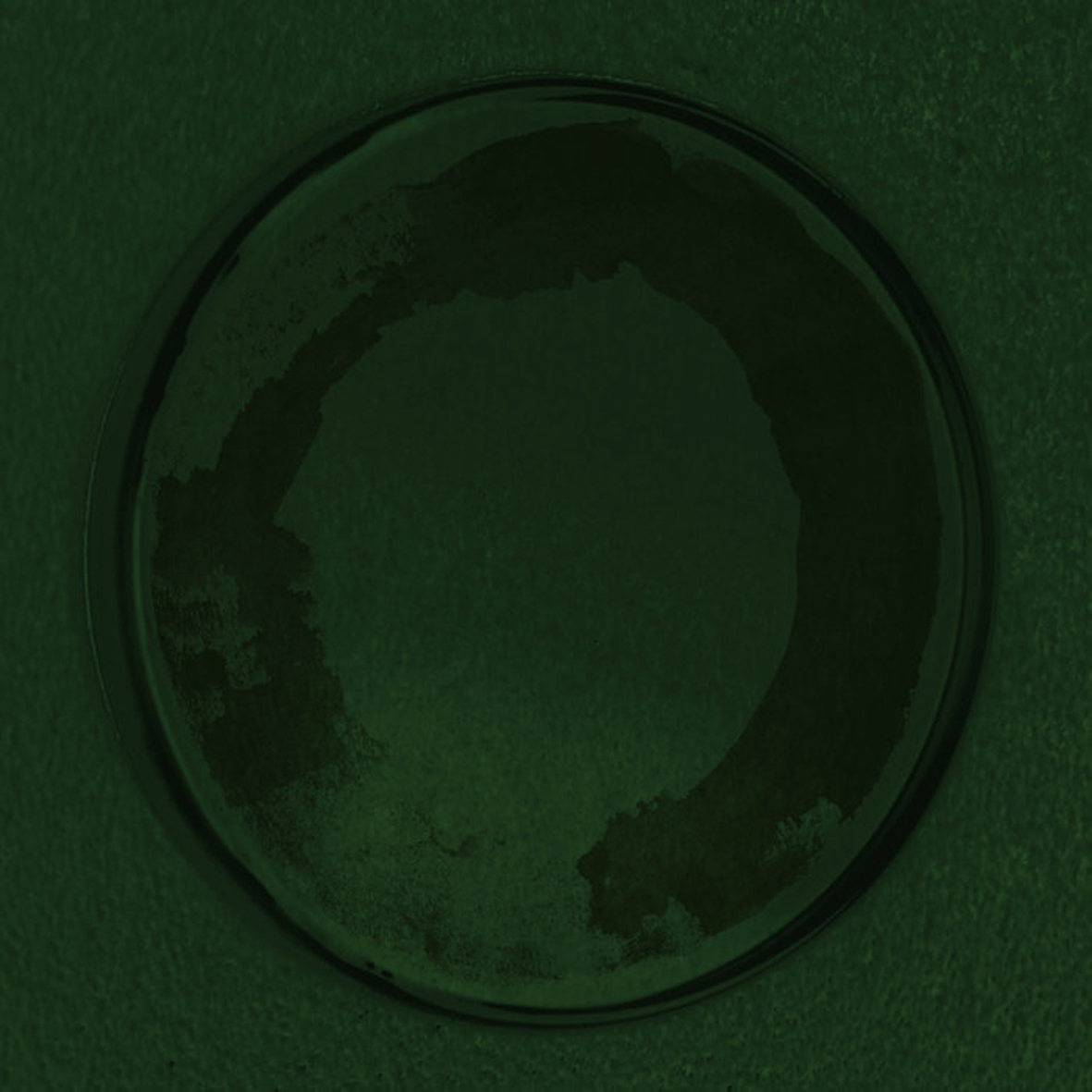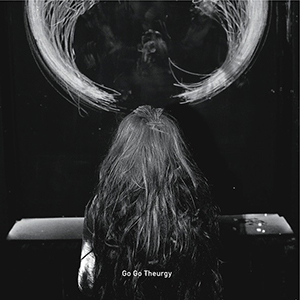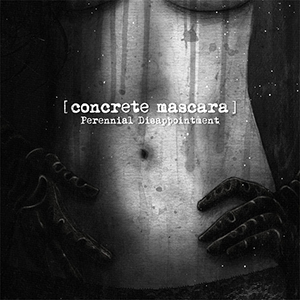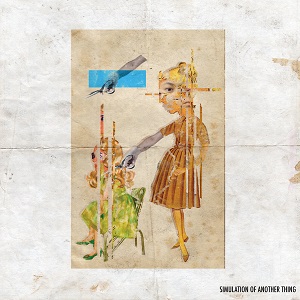 Blizzard is a luxurious reissue of a CDr Aaron Dilloway originally put out on his Hanson imprint back in 2009, presented here in high quality double vinyl. Dilloway and Robert Turman recorded these four pieces together during an actual blizzard, which not only further enhances mood, but also seems to creep in throughout these lengthy compositions. Largely based upon analog synthesizer and tape manipulation, the duo not only captures the frigid, isolated mood of being caught in a massive snowstorm, but the sounds of one as well.
Blizzard is a luxurious reissue of a CDr Aaron Dilloway originally put out on his Hanson imprint back in 2009, presented here in high quality double vinyl. Dilloway and Robert Turman recorded these four pieces together during an actual blizzard, which not only further enhances mood, but also seems to creep in throughout these lengthy compositions. Largely based upon analog synthesizer and tape manipulation, the duo not only captures the frigid, isolated mood of being caught in a massive snowstorm, but the sounds of one as well.
Two new shows just for you. We have squeezed out two extended release episodes for this weekend to get you through this week. They contain mostly new songs but there's also new issues from the vaults. The first show features music from Rider/Horse, Mint Field, Robert Aiki Aubrey Lowe, Anastasia Coope, ISAN, Stone Music, La Securite, Bark Psychosis, Jon Rose, Master Wilburn Burchette, Umberto, Wand, Tim Koh, Sun An, and Memory Drawings. The second episode has music by Laibach, Melt-Banana, Chuck Johnson, X, K. Yoshimatsu, Dorothy Carter, Pavel Milyakov, Violence Gratuite, Mark Templeton, Dummy, Endon, body / negative, Midwife, Alberto Boccardi, Divine. Cow in Maui from Veronika in Vienna. Get involved: subscribe, review, rate, share with your friends, send images! |



 The quartet of Nakama (Adrian L√∏seth Waade on violin, Ayumi Tanaka on piano, Andreas Wildhagen playing drums, and Christian Meaas Svendsen providing double bass) expand upon their use of silence in juxtaposition with experimental jazz from their previous record, Before the Storm, into this newer, more conceptually structured work. The album is based upon Svendsen's structuring, which instructs the performers to improvise their playing reacting to a visual structure, giving the work an additional layer of complexity that makes the album all the more compelling.
The quartet of Nakama (Adrian L√∏seth Waade on violin, Ayumi Tanaka on piano, Andreas Wildhagen playing drums, and Christian Meaas Svendsen providing double bass) expand upon their use of silence in juxtaposition with experimental jazz from their previous record, Before the Storm, into this newer, more conceptually structured work. The album is based upon Svendsen's structuring, which instructs the performers to improvise their playing reacting to a visual structure, giving the work an additional layer of complexity that makes the album all the more compelling.

 Go Go Theurgy is Polish composer Anna Zaradny's first album in eight years, following 2008's Mauve Cycles. Like that release, there is a significant amount of experimentation and abstraction to be heard on this record's two side long composition, yet for all its dissonance there is clearly order here. Order that takes the form of deconstructing and rebuilding more conventional pop and electronic music elements into completely unique contexts. It is challenging but captivating all the same.
Go Go Theurgy is Polish composer Anna Zaradny's first album in eight years, following 2008's Mauve Cycles. Like that release, there is a significant amount of experimentation and abstraction to be heard on this record's two side long composition, yet for all its dissonance there is clearly order here. Order that takes the form of deconstructing and rebuilding more conventional pop and electronic music elements into completely unique contexts. It is challenging but captivating all the same. After a bit of a long slumber, Kranky has resurfaced with the first full-length from New Orleans’ Melissa Guion.  Guion’s previous discography is a bit lean, as she has previously only released one cassette back in 2014, but she seems to have quite a fully formed aesthetic that will no doubt delight fans of the Kranky milieu.  In fact, it is quite hard to discuss Precious Systems without making favorable comparisons to Grouper, as Guion is quite a similarly enthusiastic proponent of hazy, reverb-swathed vocals.  Musically, however, MJ Guider is far more indebted to shoegaze and gauzy 4AD-style Romanticism, crafting propulsive and hook-filled songs that feel artfully hollowed-out and slowed to a narcotic crawl.
After a bit of a long slumber, Kranky has resurfaced with the first full-length from New Orleans’ Melissa Guion.  Guion’s previous discography is a bit lean, as she has previously only released one cassette back in 2014, but she seems to have quite a fully formed aesthetic that will no doubt delight fans of the Kranky milieu.  In fact, it is quite hard to discuss Precious Systems without making favorable comparisons to Grouper, as Guion is quite a similarly enthusiastic proponent of hazy, reverb-swathed vocals.  Musically, however, MJ Guider is far more indebted to shoegaze and gauzy 4AD-style Romanticism, crafting propulsive and hook-filled songs that feel artfully hollowed-out and slowed to a narcotic crawl. For their fourth record, the duo of Kane Ikin and Paul Fiocco took a different approach, and decided to revisit fragments of previous recordings that lay forgotten on various hard drives and cassette tapes for a multitude of years. Beginning with these elements, they then reworked the material and recorded new parts, making these recordings a sort of hybrid of unreleased works and new material. Because of that, In The Lens may at times feel more like a collection of songs rather than a full-fledged album, but that is no major detriment considering how well these compositions are executed.
For their fourth record, the duo of Kane Ikin and Paul Fiocco took a different approach, and decided to revisit fragments of previous recordings that lay forgotten on various hard drives and cassette tapes for a multitude of years. Beginning with these elements, they then reworked the material and recorded new parts, making these recordings a sort of hybrid of unreleased works and new material. Because of that, In The Lens may at times feel more like a collection of songs rather than a full-fledged album, but that is no major detriment considering how well these compositions are executed. Wire’s latest mini-album is a somewhat darker, subtly more experimental, and arguably superior sister to their self-titled 2015 release.  In fact, these songs were all written during the very same period, but they were split off into their own release because they ostensibly shared a path directly opposed to the aesthetic of Wire: the self-titled album was a deliberately no-frills document of what the band actually sounds like when they play together in a room, while Koreans documents what they can achieve with studio enhancements and liberal editing.  Despite those very different approaches, the two albums do not actually seem all that different to my ears.  I guess I was hoping for a bit more of a radical departure than this.  While there are a few intriguing exceptions, Koreans mostly just sounds like more of the same hook-heavy and slightly off-kilter songcraft that I always expect from Wire.  That is certainly not a bad thing, but Nocturnal Koreans is definitely more solid than revelatory.
Wire’s latest mini-album is a somewhat darker, subtly more experimental, and arguably superior sister to their self-titled 2015 release.  In fact, these songs were all written during the very same period, but they were split off into their own release because they ostensibly shared a path directly opposed to the aesthetic of Wire: the self-titled album was a deliberately no-frills document of what the band actually sounds like when they play together in a room, while Koreans documents what they can achieve with studio enhancements and liberal editing.  Despite those very different approaches, the two albums do not actually seem all that different to my ears.  I guess I was hoping for a bit more of a radical departure than this.  While there are a few intriguing exceptions, Koreans mostly just sounds like more of the same hook-heavy and slightly off-kilter songcraft that I always expect from Wire.  That is certainly not a bad thing, but Nocturnal Koreans is definitely more solid than revelatory. New Jersey based harsh electronics trio Concrete Mascara have a handful of limited releases since their inception in 2011, but Perennial Disappointment is only their second full length album, following 2014's Blossoms of Shame. The title is obviously a tongue-in-cheek, self-effacing joke, however, because the eight songs that comprise it seethe with menace, creating a dark, violent environment via aggressive vocals, destroyed electronics, and perverse attempts at building rhythm.
New Jersey based harsh electronics trio Concrete Mascara have a handful of limited releases since their inception in 2011, but Perennial Disappointment is only their second full length album, following 2014's Blossoms of Shame. The title is obviously a tongue-in-cheek, self-effacing joke, however, because the eight songs that comprise it seethe with menace, creating a dark, violent environment via aggressive vocals, destroyed electronics, and perverse attempts at building rhythm. San Diego’s Steve Flato has remarkable and unpredictable range—from structured harsh noise (Mara’s Daughters) and hallucinogenic sine assaults (Salon de Flato) to mathematical ambience (This Is Our Last Cry Before Our Eternal Silence), and now, with Simulation of Another Thing, orchestrated soundtracks. Recorded with a trio featuring trombone, tuba, and French horn, Simulation blends melody, voice, field recordings, and improvised noise across three varied and affective songs (with an emphasis on the sinister). It comes in at a concise 30 minutes, but Flato packs a lot of great performances and unusual choices into that space, including one that combines the reassuring voice of a hairdresser with the steady pulse of a drum machine.
San Diego’s Steve Flato has remarkable and unpredictable range—from structured harsh noise (Mara’s Daughters) and hallucinogenic sine assaults (Salon de Flato) to mathematical ambience (This Is Our Last Cry Before Our Eternal Silence), and now, with Simulation of Another Thing, orchestrated soundtracks. Recorded with a trio featuring trombone, tuba, and French horn, Simulation blends melody, voice, field recordings, and improvised noise across three varied and affective songs (with an emphasis on the sinister). It comes in at a concise 30 minutes, but Flato packs a lot of great performances and unusual choices into that space, including one that combines the reassuring voice of a hairdresser with the steady pulse of a drum machine.
